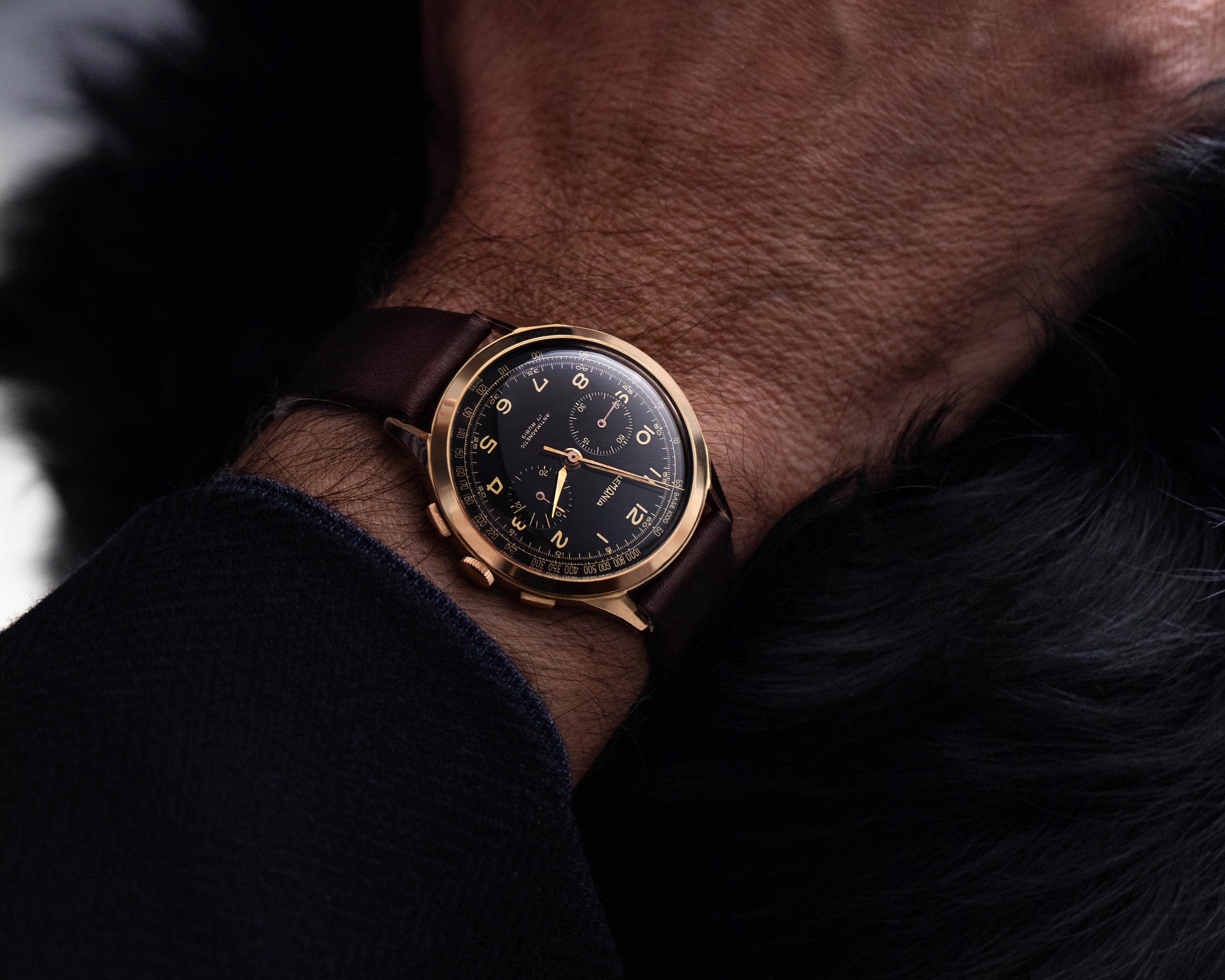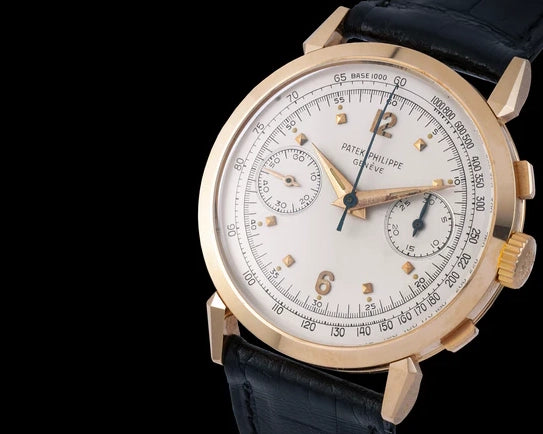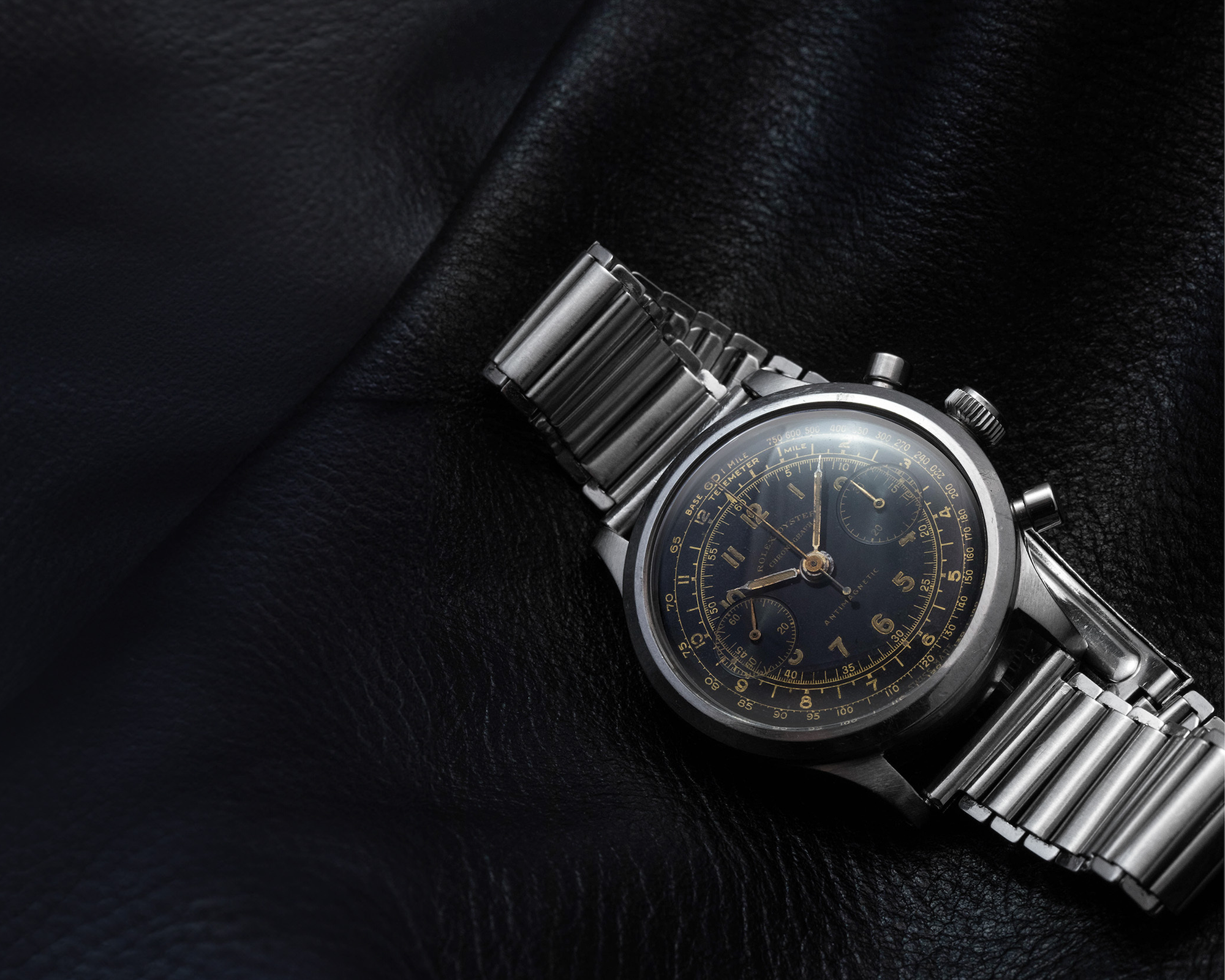
Lemania Rediscovered
A Century of History in Watchmaking
The passion and overwhelming charm linked to the world of vintage watches have been the driving force that, in more than fourty years of experience, has allowed us to experience firsthand objects with incredible histories as well as undeniable beauty and craftsmanship, such as Lemania chronographs.
The Vallée de Joux has been for centuries the most fertile part of Switzerland when it comes to the design, development, and manufacture of watch movements. From the multitude of brands born in the nineteenth century emerged Lemania, headquartered in L'Orient, in the southwest of the area surrounding Lake Joux, in the canton of Vaud.
The most important manufactures of that period often owed their success to the enterprise of men with pronounced innovative tendencies, and for Lemania, that visionary figure was undoubtedly Alfred Lugrin.
Born in 1858, Alfred came from a humble family of farmers in rural L'Isle, in the canton of Vaud. After attending compulsory schooling until 1872 and seeing his innate passion and ability in the field of precision mechanics, Lugrin completed an apprenticeship as a watchmaker mechanic until 1879, when he was hired by Le Coultre.
Alfred intended to start his own business, and with the help of three colleagues, he opened a workshop in Le Sentier in 1884, calling it "Fabrique d'Ebauches et Mouvements A. Lugrin & Cie.", later transferred to L'Orient in the locality of "La Trompette" starting from 1886, which would remain the iconic location associated with the Lemania brand to this day.
Production began with the assembly of chronographs on blanks, then continued with the commercialization of ebauches for chronographs, stopwatches, and quarter repeating watches.
It can be said that Alfred Lugrin was a radical, and his innovative strength was noticed to the extent that in 1906 he won the gold medal at the Milan Universal Exhibition, in 1914 he repeated the result at the Swiss National Exhibition, and in the same years he became one of the main promoters of the "Watchmaking School" of Le Chenit, of which he became the principal in those years.
From 1910 to 1919, he was a member of the Vaud Grand Council, within which he particularly supported the association of industrialists and traders.

As was common in most manufactures of the time, chronographs and other complicated watches were built on behalf of third-party manufacturers or wholesalers but without the brand on the dial or movement, despite Lemania being registered since March 14, 1906, under number 20226.
In 1912, Lugrin hired a graduate from the local watchmaking school, the young Marius Meylan, son of the elderly watchmaker Alfred Meylan, who in 1917 would become his son-in-law by marrying his daughter Jeanne.
The handover from the firm "A. Lugrin & Cie." to the newborn "Lemania-Lugrin SA" with a branch in la Chaux Le Fond dates back to 1918, which saw Meylan's entry as a partner. At the end of the First World War, Lemania was reported to have at least 47 employees, making it a company of considerable size for Switzerland at that time.
On December 27, 1920, Alfred passed away in Le Sentier after 35 years at the helm of Lemania. Marius, his son-in-law, took over the company, and in 1924, he had the business name changed to "Lemania Watch Co." Thanks to the development and marketing of complete watches bearing the Lemania name, it became a high-end watch brand in every respect.
From 1929, due to the financial crisis, tough times also came for Swiss companies, especially affecting emerging companies that lacked the resources to overcome the challenges of the Great Depression. It seemed obvious for many companies at that time to pursue the path of corporatism, and thus, already in 1930, the SSIH (Swiss Society for the Watch Industry) was established, founded by Omega and Tissot.

In 1932, the new company saw the entry of Lemania, necessitated by the difficulties encountered in the previous three years. In the following years, the group also expanded to include Lanco, Cortebert, Rayville, Favre, and Hamilton.
Thanks to the creation of the SSIH Group, Lemania managed to continue its production while also starting to produce calibers for Omega, a factor that would give the Lemania name considerable visibility in the market in the years to come.
Certainly important for the brand was the opportunity to be chosen as the official supplier of the 1932 Los Angeles Olympics, a role it has maintained to this day.

During those years, in addition to sports timers and cockpit instruments, Lemania also developed various chronograph calibers from 13 to 15 lines (calibers that would be used until the 1960s to power watches issued to armed forces in various countries around the world).
Albert Piguet, whose grandfather was a co-founder of "Piguet-Freres" and whose father was vice director of Le Coultre in Sentier and later Director of Zenith in Le Locle, was the lead designer at Lemania in 1941 (by 1940, the company had over 200 employees), and it was in that year that he began developing the project for a new manual-winding chronograph caliber with a 12-hour counter, column wheel, and a 46-hour power reserve.
The project was completed in '42 and was called Caliber 27-CHRO-12, representing a true revolution due to its small size and incredible thinness of the mechanism.
In 1946, the chronograph movement 27-CHRO-C12 underwent some minor modifications (mostly related to the presence of the Incabloc shock protection system), while in 1949, it was renamed caliber 2310-2320 at Lemania and caliber 321 at Omega, which used it on the Speedmaster worn during the NASA "Apollo 11" mission that first landed man on the moon in 1969.

On this basis, in the following years, several calibers with two counters (1270, 1275, 1276, and 1277) and three counters (1280 and 1281) were developed. These new projects no longer featured a column wheel but had a system with the distribution of the chronograph functions using a lever, which would simplify construction and consequently make the manufacturing cost more advantageous for Lemania.
It wasn't until 1968 that a new series of chronographs (1872, 1873, 1874, 1877, 1883, and 1888) was introduced. This series was considered more complete and reliable than the previous ones, and thanks to Lemania's quality craftsmanship, its calibers were mounted on Omega (861 and 863), Tissot, Universal Geneve (84), Frank Muller (1870), Ulysse Nardin (UN53), and many other leading brands in the watchmaking world.
NASA's space missions further solidified Lemania's reputation, and its new chronographs were used by Breitling, Girard Perrigaux, Audemars Piguet, and even Patek Philippe, being utilized for the commercialization of chronographs across various price ranges.

However, the aforementioned movements were all manual-winding, and rival factories were now focusing on new automatic series.
Breitling, Heuer, and Hamilton collaborated on the design of a chronograph caliber based on Buren, while Zenith, as early as 1969, introduced its caliber called the "El Primero."
Lemania, on the other hand, was delayed in the development of its automatic chronograph caliber, partly because Valjoux (its main competitor in the production of chronograph calibers) had not yet ventured in this direction.
Under this increasing market pressure, in 1972, the automatic chronograph series 1340, 1341, 1343, and 1350 were launched, derived from the previous series to fill the void created by the lack of this type of movement within Lemania's portfolio. At that time, the company employed approximately 500 employees.
Completely new was the automatic chronograph caliber 5100 presented in 1978 and primarily used in many military watches (Tutima-Orfina-Sinn) but also by Heuer and Omega. With this caliber, Lemania made significant efforts to lower manufacturing costs while maintaining a high level of quality and robustness.
Some of the modifications made in the project included redesigning several parts in nylon to better absorb any sudden impacts on the rotor, while the chronograph module was housed under the dial, between it and the mainplate.
The dial featured the 12-hour counter at 6 o'clock, the continuous seconds counter at 9 o'clock, and the minute counter was central with a hand below the chronograph seconds hand (but with an airplane wing-shaped tip to distinguish it), synchronized with it.
During those years, an agreement was signed with Jean Lassale for the supply of an ultra-thin mechanical single-time movement with a thickness of 1.20 millimeters for the manual version and 2.08 millimeters for the automatic version.
Towards the mid-1970s, Switzerland was severely hit by the so-called quartz crisis, and in 1980, the SSIH group decided to sell its Lemania factory to reduce production costs.
The Piaget group acquired the company in 1981, renaming it "Nuova Lemania" and reducing its workforce, allowing the group to equip Heuer watches with Lemania movements and to use caliber 1200 (made for Jean Lassale in 1972) and turning it into 1210, thus filling a gap in high-end brands. During the same period, the chronograph series 2310 and 2320 (those from 1942 with a column wheel) were reconsidered to equip high-end chronographs such as Patek Philippe (2872), Vacheron Constantin, and Roger Dubuis, from the mid-1980s until the mid-2010s of this century.

In 1992, one of Bahrain's most significant investment funds, Investcorp, already the owner of the Breguet group, acquired control of Nuova Lemania, overseeing the construction of a new factory in L'Abbaye in 1996.
In the nineties, many movements from different brands such as Ebel 137 (1994), Breguet 582 (1995), Ulysse Nardin 32 (1996) were directly derived from Lemania calibers. In 1999, Swatch Group, following the immense success of its watch launches, acquired the Breguet group, including Lemania.
Nicholas G. Hayek, CEO of Swatch Group, after the acquisition of the Breguet Group from Investcorp, declared his intention to strengthen and expand the brand worldwide, allocating 20 million Swiss francs for this purpose.
Hayek himself had the Lemania building in L'Orient at 2 Via Alfred Lugrin restored, adding a much larger and modern new wing, purchasing new machine tools, and training new staff to increase and improve production.
In 2009, following a reorganization of the Swatch Group, it was decided not to sell ebauches to competing companies within the group, and the movements of Nuova Lemania were exclusively reserved to supply Breguet manufacture.
2010 marked the definitive disappearance of the Lemania brand, which was officially absorbed and renamed Breguet. Quietly, the Lemania sign on the building in L'Orient was replaced with the inscription "Montres Breguet SA," while the factory in L'Abbaye became the headquarters for the design, assembly, and testing of Breguet watches.
Despite many of the memories of Lemania's roots being removed, its legacy remains ever-present in the many Lemania watches as well as in the magnificent Breguet timepieces built using its designs.






Leave a comment
This site is protected by hCaptcha and the hCaptcha Privacy Policy and Terms of Service apply.